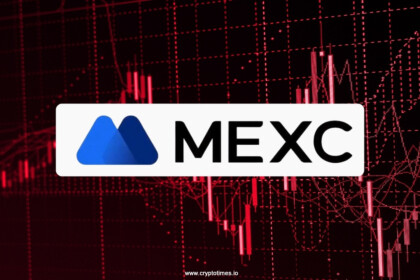In a stunning reemergence from behind bars, Sam Bankman-Fried (SBF) — the convicted Founder of the collapsed crypto exchange FTX, has resurfaced online through an account once tied to him, insisting that the company was never actually insolvent.
Late Thursday, the account posted a link to a 14-page document titled “FTX: Where Did the Money Go?”. It is a manifesto-like explanation arguing that the exchange’s downfall was not the result of fraud, but of a temporary liquidity crunch hijacked by its own legal team.
The document, dated September 30, 2025, and said to be authored by Bankman-Fried and his team, opens with a striking claim: “Over seven million customers deposited around twenty billion dollars to the cryptocurrency exchange FTX. In November 2022, when customers tried to withdraw their money, FTX filed for bankruptcy with $8 billion still owed to customers. For a couple of years, customers got nothing back. Where did those billions go? The answer is they never left.”
According to the document, roughly 98% of creditors have now received at least 120% of their claims, while the estate, after paying $8 billion in customer claims and $1 billion in lawyer fees, still holds $8 billion in remaining assets.
“In fact, FTX was never insolvent,” the document continues. “There have always been enough assets to repay all customers — in full, in kind — both in November 2022 and today.”
A liquidity crisis, not bankruptcy
The narrative reframes the collapse, not as a multibillion-dollar fraud, but as a cash-flow mismatch. “The crisis FTX faced in November 2022 was a liquidity crisis, i.e., a sudden shortage of cash,” the text says. “It was on track to be resolved by the end of the month — that is, until FTX’s external counsel seized control. FTX was never bankrupt, even when its lawyers placed it into bankruptcy.”
To back that claim, the document includes figures from a January 2023 presentation filed in the Delaware bankruptcy court. It lists approximately $15 billion in assets at the time of filing, including $5.5 billion in liquid assets, $685 million in Solana, $1.7 billion in cash and real estate in The Bahamas valued at $253 million.
It also details investments worth $4.6 billion across 300 companies such as Anthropic, Mysten Labs, StarkWare, Anchorage Digital, Genesis Digital Assets, and Yuga Labs.
“The money never left”
When users on X asked where the billions went, the post answered bluntly, “The answer is: It never left. In fact, 98% of allowed FTX customer claims have already been fully repaid — with interest.”
The statement adds that all repayments are “in petition-date USD,” meaning values fixed to November 2022 rates. It argues that when the bankruptcy lawyers took over, FTX still had “enough money to repay everyone in kind (and it still would today if not for the lawyers’ mismanagement).”
The post also links to court documents showing the estate has sufficient funds to cover a $6.5 billion disputed claims reserve.
A small victory for disputed claimants
Last week, customers with disputed claims, many outside the U.S., won what was described as a “small victory.” FTX’s bankruptcy lawyers had sought to withhold repayments in 49 countries, even as they and government agencies continued receiving billions from the estate. But on Thursday, a new judge rejected the motion, calling it “too early to make such a decision.”
Among those leading the fight for international creditors is ‘Will的折腾纪’, a Chinese creditor who wrote, “This is a beginning, not the end. We must keep pushing until every creditor gets paid. More Chinese creditors and media should join this effort — we need visibility and unity.” He runs a Telegram group for FTX China creditors.
“Enough money to pay back every creditor”
The new document reiterates the same argument Bankman-Fried made in a March interview from prison with commentator Tucker Carlson, where he said, there was enough money to pay back every creditor at the time that the exchange collapsed.
According to the latest claims, FTX had $25 billion in assets and $16 billion in equity value against $13 billion in liabilities as the exchange teetered in November 2022.
The political undercurrent
Two weeks ago, conservative activist Laura Loomer claimed on X that a “massive and well-funded” effort was underway to persuade President Donald Trump to pardon Bankman-Fried.
Her allegation came shortly after Trump pardoned Binance Co-Founder Changpeng Zhao (CZ), a former rival of Bankman-Fried’s, who had pleaded guilty to violating U.S. anti-money-laundering laws.
Bankman-Fried remains in federal prison serving a 25-year sentence after his 2023 conviction for fraud and conspiracy. At his sentencing in 2024, U.S. District Judge Lewis Kaplan remarked, “A thief who takes his loot to Las Vegas and successfully bets the stolen money is not entitled to a discount on his sentence.”
The friend’s perspective
One of Bankman-Fried’s long-time associates, posting on X under the handle @Tyler, shared the document and added: “This is why on the day of the crash SBF was adamant the money was all still there.” He suggested that the disgraced founder had been set up.
“He was just a fall guy,” the post read. “Everyone with a brain now knows this. The real Trojan horse is still among us.”
That accusation has rekindled debate across crypto circles about whether the FTX collapse was a case of mismanagement, criminal fraud, or a coordinated takeover gone wrong.
For now, the facts remain divided between courtroom convictions and Bankman-Fried’s own persistent narrative of innocence. But as creditors continue receiving payouts that surpass their original balances, his claim that “FTX was never insolvent” has taken on new life, and a growing audience willing to listen.
Also Read: Ex-FTX US Head Launches Perpetual Futures Platform for Traditional Assets













